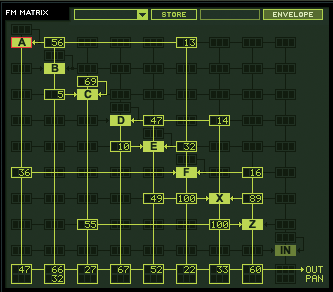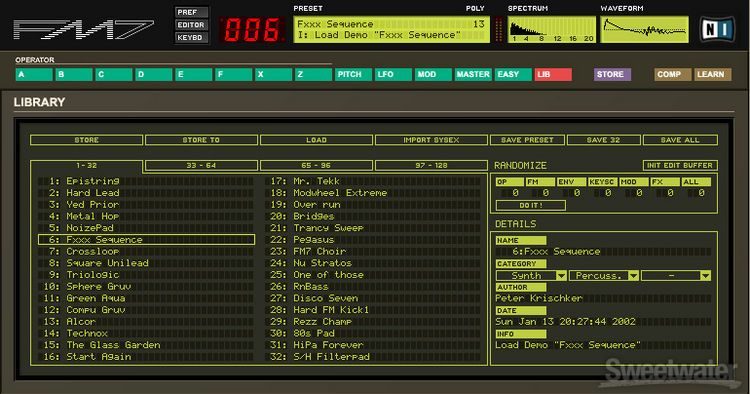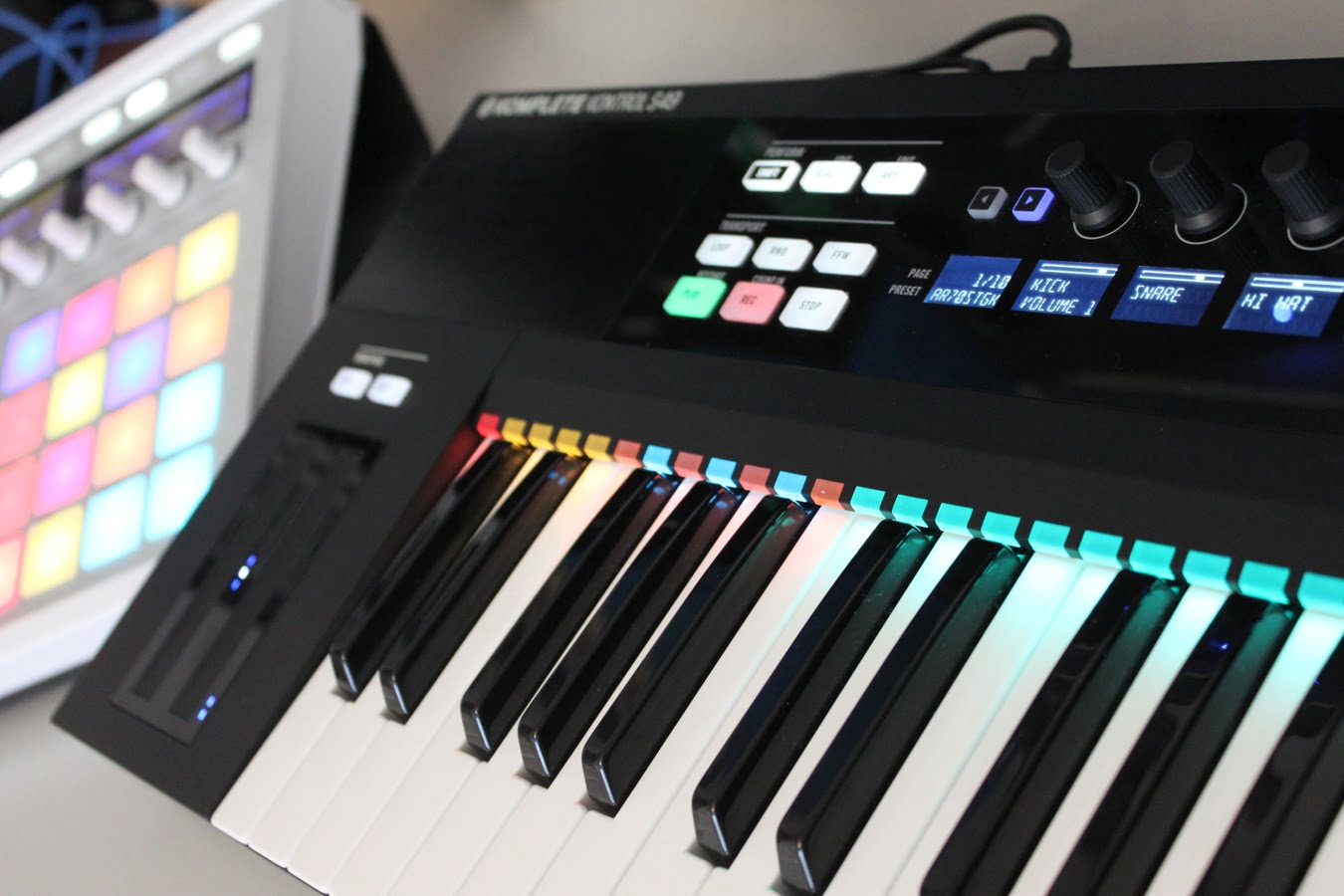
In many algorithms there are also some feedbacks, that is operators able to modulate themselves. The structure of the DX7 foresees the presence of six operators and different algorithms according to which these are linked together. So why did they call it "frequency modulation"? Because, by altering the phase of a waveform, the auditory effect obtained is an alteration of the pitch of the note and the consequent addition or loss of harmonics, even reaching inharmonicity. In fact, the very first DX7 had some of the circuitry still analog, to be precise the envelopes. This is why the DX7 is a digital synth, that is for two fundamental reasons: first, because its oscillators, called "operators", exclusively generate the sine waveform and it is easier to create a sine wave even with the simplest DSP, rather than doing it with an electronic oscillator second, because the modulation occurs on the phase and not on the frequency. the horizontal position of the waveform with respect to the time axis. What is almost impossible to do with acoustic instruments and analog synthesizers is modulating the phase, i.e. But if I modulate, instead, the amplitude of the waveform, that is its volume, I rightly obtain the amplitude modulation, exactly as for the “tremolo” effect.

If its frequency is modulated, that is, by increasing and decreasing it over time - for example with a sine wave - I obtain a modulation of frequency. If I have two oscillators, I can use one to generate the sound and another to modulate something of the first oscillator. Let us consider the three fundamental elements of sound: frequency, amplitude and phase. What many people don't know is that the DX7's frequency modulation synthesis ( Fig.1) is actually a phase modulation.

NATIVE INSTRUMENTS FM7 SOFT SYNTH UPDATE
Let's find out its potential, investigate the reason for a new version, let's try to understand if it's worth buying the update and, while we are, why not brush up on some old memories on the infamous frequency modulation synthesis?

NATIVE INSTRUMENTS FM7 SOFT SYNTH SOFTWARE
23 years after the release of the FM synth par excellence, the very famous Yamaha DX7, and 5 years after the release of its perfect software clone, the Native Instruments FM7, the German company offers us an updated and enhanced version of the already excellent plug -in and could only call it “FM8”.


 0 kommentar(er)
0 kommentar(er)
